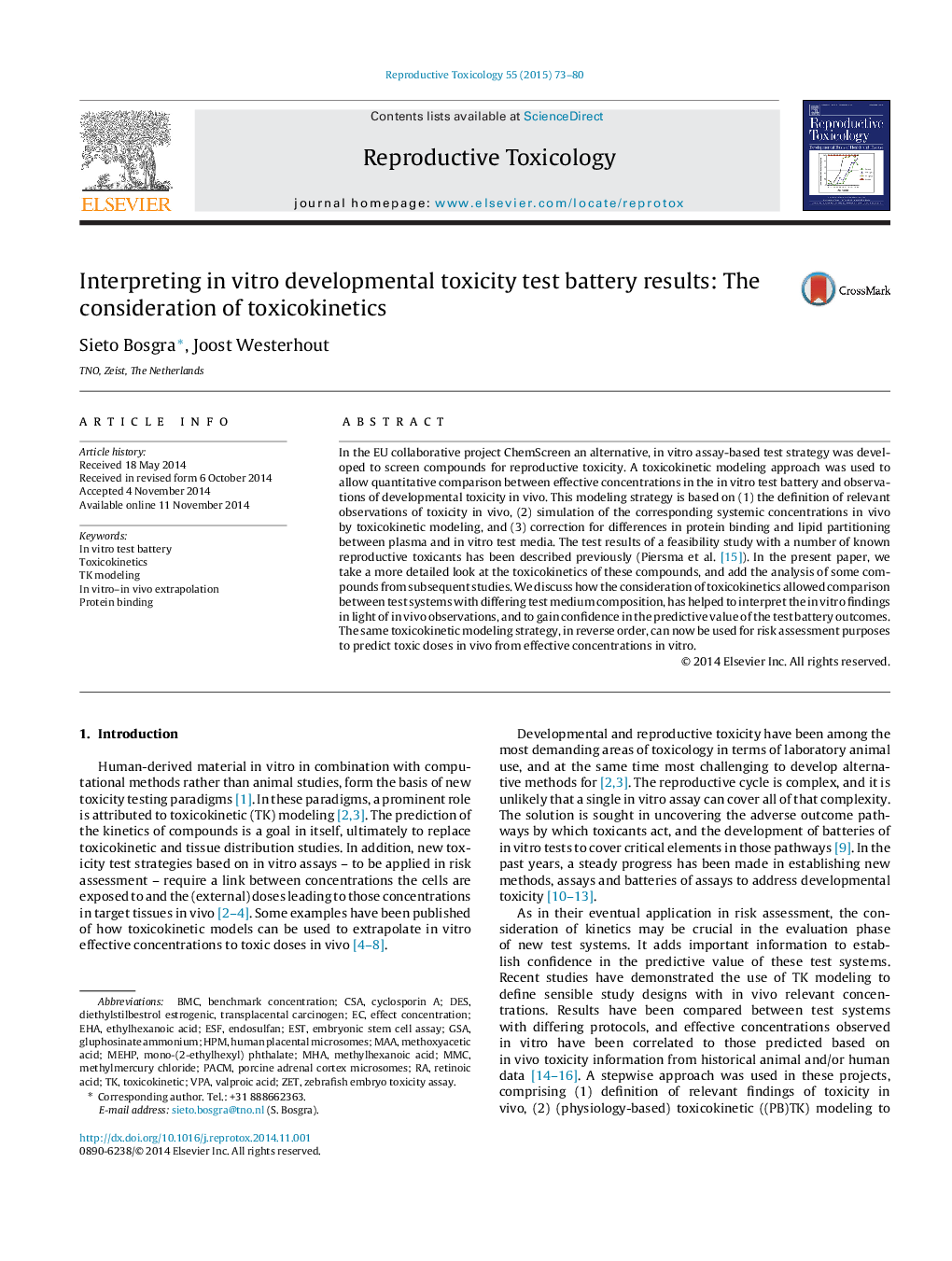| کد مقاله | کد نشریه | سال انتشار | مقاله انگلیسی | نسخه تمام متن |
|---|---|---|---|---|
| 2593454 | 1562164 | 2015 | 8 صفحه PDF | دانلود رایگان |

• An in vitro–in vivo extrapolation approach was applied to a reproductive toxicity test battery.
• Test compounds displayed effects within one order of magnitude from the concentration expected from in vivo observations.
• Few effects were seen below the expected concentrations.
• The lowest effective concentrations in the battery highlighted the compounds’ modes of action.
In the EU collaborative project ChemScreen an alternative, in vitro assay-based test strategy was developed to screen compounds for reproductive toxicity. A toxicokinetic modeling approach was used to allow quantitative comparison between effective concentrations in the in vitro test battery and observations of developmental toxicity in vivo. This modeling strategy is based on (1) the definition of relevant observations of toxicity in vivo, (2) simulation of the corresponding systemic concentrations in vivo by toxicokinetic modeling, and (3) correction for differences in protein binding and lipid partitioning between plasma and in vitro test media. The test results of a feasibility study with a number of known reproductive toxicants has been described previously (Piersma et al. [15]). In the present paper, we take a more detailed look at the toxicokinetics of these compounds, and add the analysis of some compounds from subsequent studies. We discuss how the consideration of toxicokinetics allowed comparison between test systems with differing test medium composition, has helped to interpret the in vitro findings in light of in vivo observations, and to gain confidence in the predictive value of the test battery outcomes. The same toxicokinetic modeling strategy, in reverse order, can now be used for risk assessment purposes to predict toxic doses in vivo from effective concentrations in vitro.
Figure optionsDownload as PowerPoint slide
Journal: Reproductive Toxicology - Volume 55, 1 August 2015, Pages 73–80